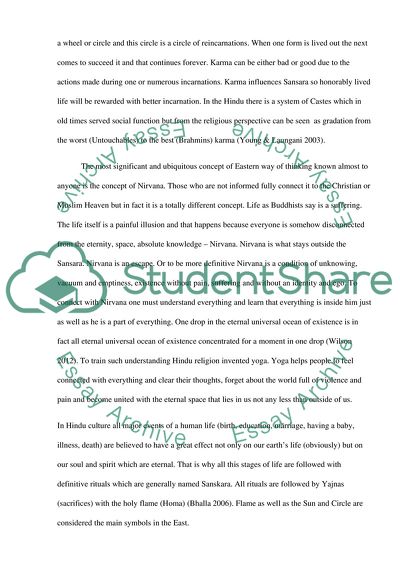Cite this document
(Traditions and Cultural Background of the Understanding of the Death in India, Hinduism and Other Eastern Religions Essay Example | Topics and Well Written Essays - 1250 words, n.d.)
Traditions and Cultural Background of the Understanding of the Death in India, Hinduism and Other Eastern Religions Essay Example | Topics and Well Written Essays - 1250 words. https://studentshare.org/religion-and-theology/1875850-multiculturalspiritual-aspects-of-death-and-dying-grief-and-loss-reasearch-paper
Traditions and Cultural Background of the Understanding of the Death in India, Hinduism and Other Eastern Religions Essay Example | Topics and Well Written Essays - 1250 words. https://studentshare.org/religion-and-theology/1875850-multiculturalspiritual-aspects-of-death-and-dying-grief-and-loss-reasearch-paper
(Traditions and Cultural Background of the Understanding of the Death in India, Hinduism and Other Eastern Religions Essay Example | Topics and Well Written Essays - 1250 Words)
Traditions and Cultural Background of the Understanding of the Death in India, Hinduism and Other Eastern Religions Essay Example | Topics and Well Written Essays - 1250 Words. https://studentshare.org/religion-and-theology/1875850-multiculturalspiritual-aspects-of-death-and-dying-grief-and-loss-reasearch-paper.
Traditions and Cultural Background of the Understanding of the Death in India, Hinduism and Other Eastern Religions Essay Example | Topics and Well Written Essays - 1250 Words. https://studentshare.org/religion-and-theology/1875850-multiculturalspiritual-aspects-of-death-and-dying-grief-and-loss-reasearch-paper.
“Traditions and Cultural Background of the Understanding of the Death in India, Hinduism and Other Eastern Religions Essay Example | Topics and Well Written Essays - 1250 Words”. https://studentshare.org/religion-and-theology/1875850-multiculturalspiritual-aspects-of-death-and-dying-grief-and-loss-reasearch-paper.


